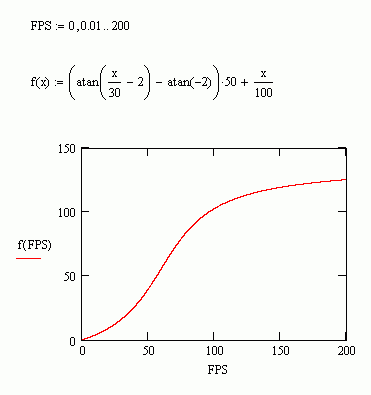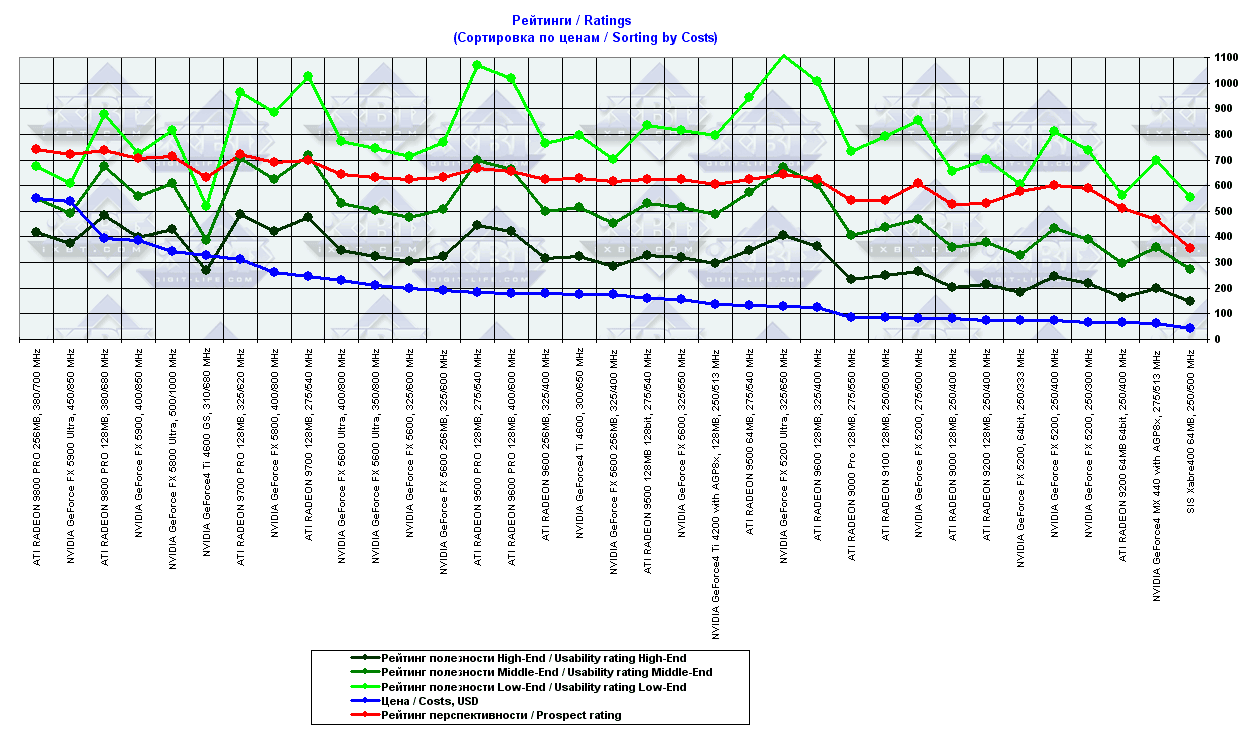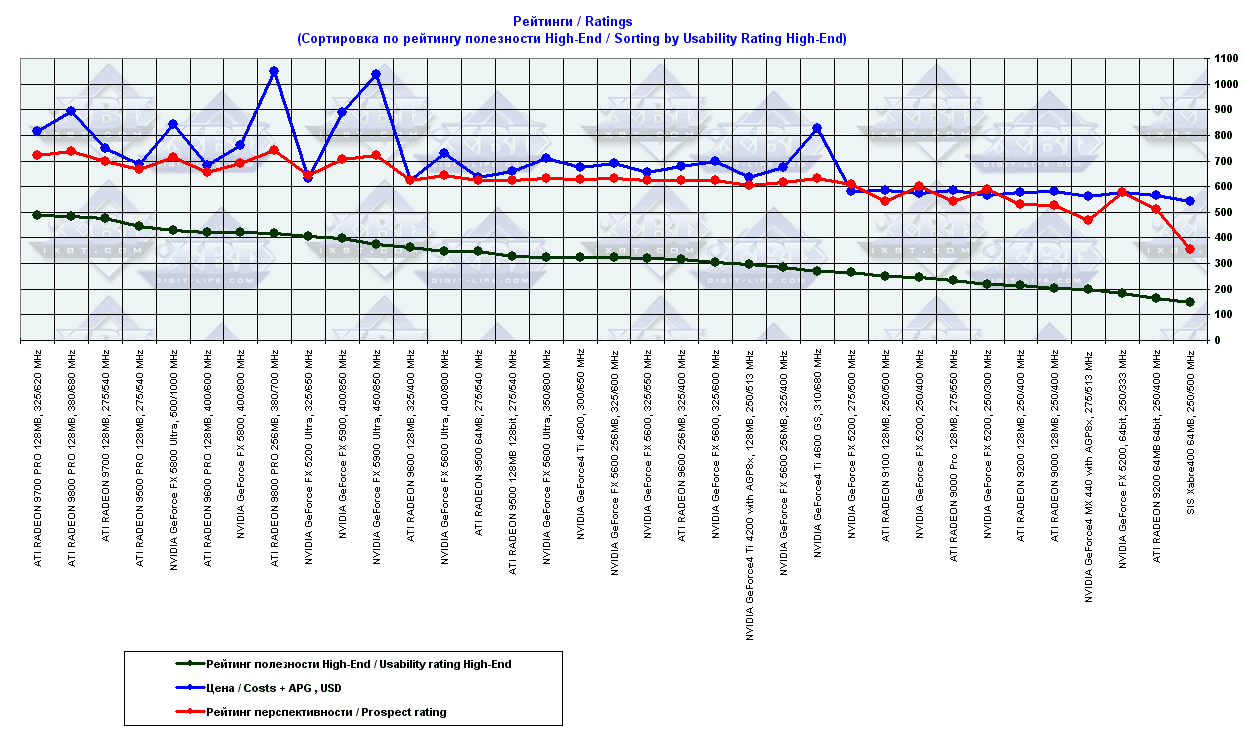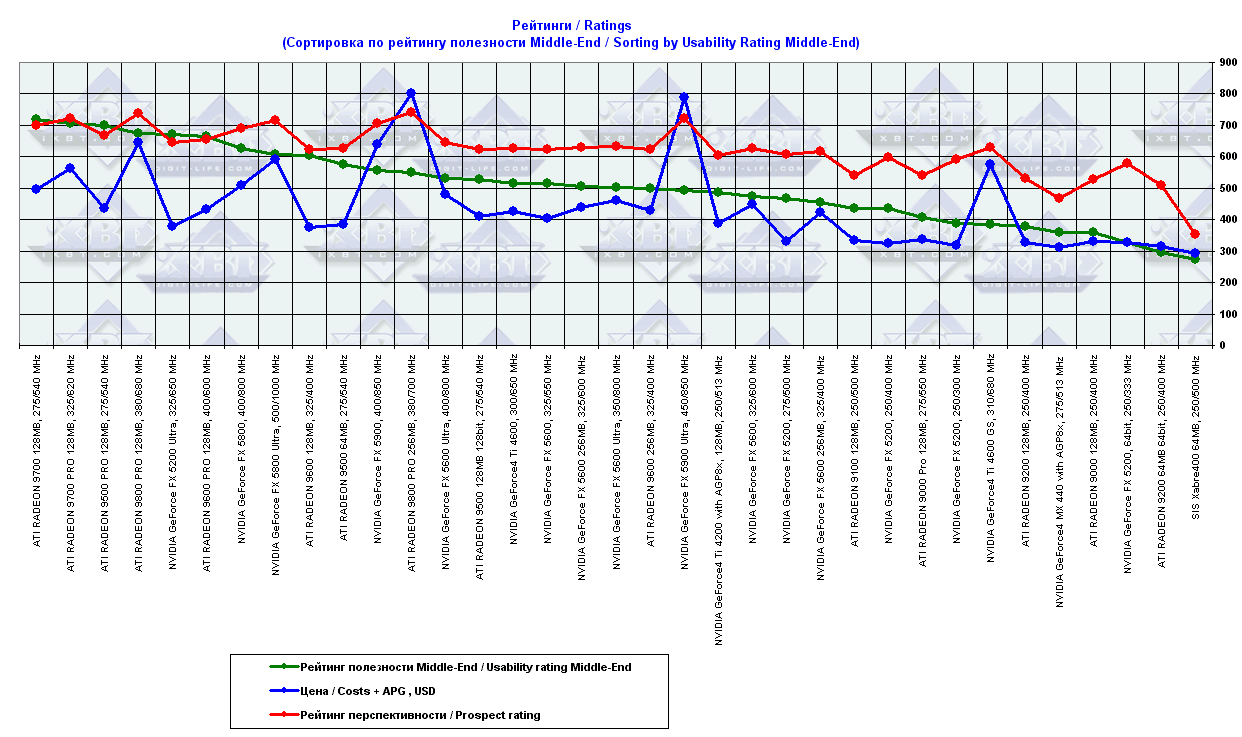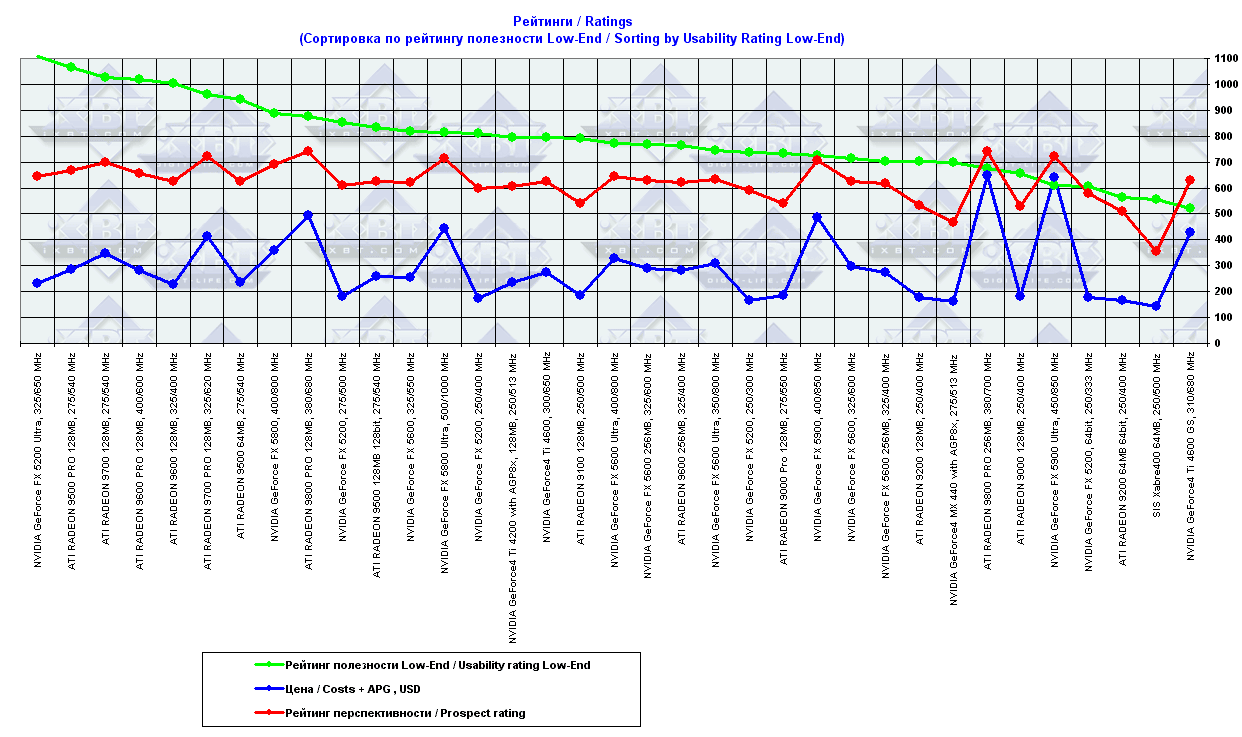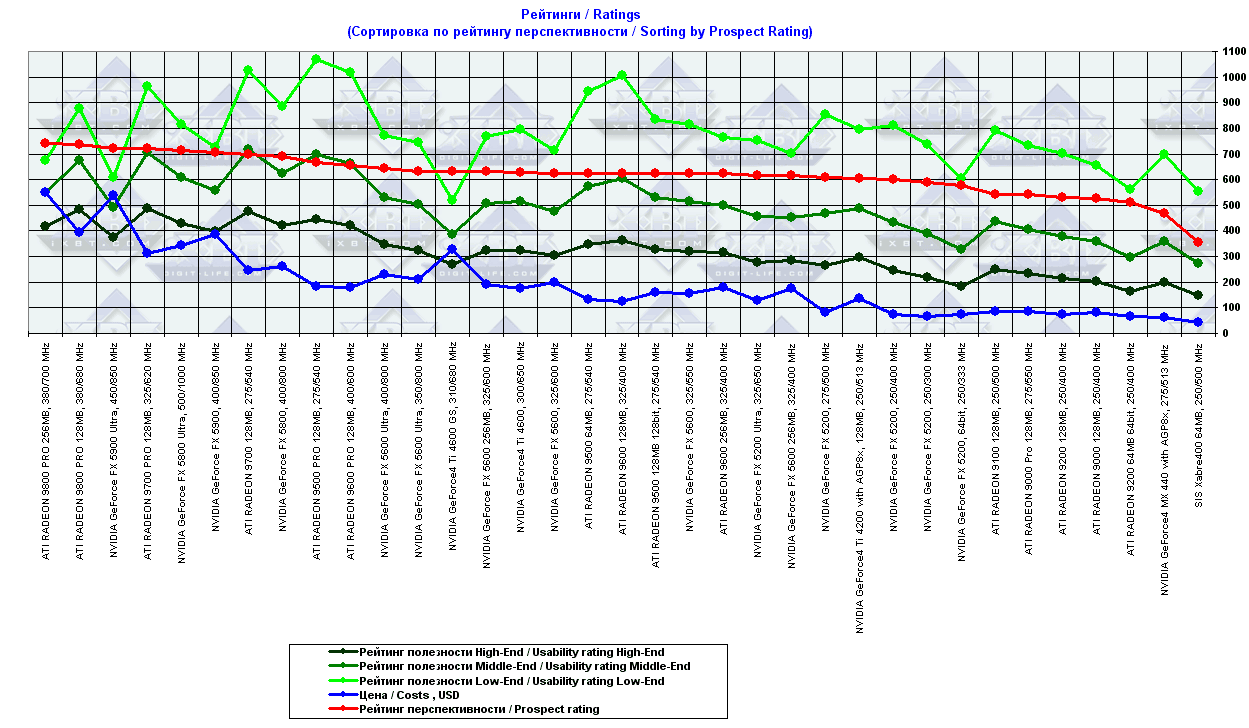[an error occurred while processing this directive]
Monthly 3D Digest is the project of iXBT.com devoted to releases of new Windows XP (monthly) and Windows 9x/ME (once in 4 months) drivers for popular videocards (released from 10th of June 2003 to 10th of July 2003). As usual, there are many diagrams containing the information on changes in operation of videocards at change to last version drivers, and also summary diagrams of popular modern videocards performance. Traditionally we provide the best price/performance information for our 3Digest. Quality aspects are reviewed in the section dedicated to Windows XP.
July 2003
The second summer month brought better weather and made overclocking harder due to higher environment temperature. Nevertheless, we continue our work and research.
There were almost none global news this month. As we warned, the vacation season is "at large". Still, new drivers are being released and we test them in our lab.
It's our 38th issue of 3Digest.
CONTENTS
- Testbed configurations and test software
- Tested videocards list
- What's new in 3Digest
- Test summary diagrams and digest bottom line
- Anisotropic filtering examination
- Examination of different antialiasing modes
- Archive (information from the previous 3Digests absent in this issue).
- Graphics card archive (for videocards, which info is no longer updated)
- 3D accelerator rating calculations for the end of the month
- Screenshot gallery
- Games quality section
1. Testbed configuration
1.1. Pentium 4 3.2GHz-based system:
- Intel Pentium 4 3.2 GHz (L2=512K) CPU, Hyper-Threading enabled;
- DFI LANParty Pro875 motherboard on i875P chipset
- 1 GB DDR SDRAM PC3200;
- Seagate Barracuda IV 40GB HDD.
- Quantum FB AS 20GB HDD.
|

|
All computers had Windows XP Professional Service Pack 1, DirectX 9.0a installed. ViewSonic P810 (21") and ViewSonic P817-E (21") monitors were used.
These apps were used as testing instruments:
- Return to Castle Wolfenstein (MultiPlayer) (id Software/Activision) - OpenGL, multitexturing, ixbt0703demo, max. details, S3TC OFF, configs are here
.
Testing order: invoke console by pressing '~' and type
timedemo 1 (press Enter)
demo ixbt0703demo (press Enter)
- Unreal 2: The Awakening (Infogrames), DirectX 8.1, multitexturing, testing in Bench'emAll! 2.5beta.
- Serious Sam: The Second Encounter v.1.05 (Croteam/GodGames) - OpenGL, multitexturing, ixbt0703demo, test settings: quality.
Testing order: invoke console by pressing '~' and type
dem_bProfile=1 (press Enter)
run ixbt0703demo from the menu
- Codecreatures Benchmark Pro (Codecult) - Direct3D, Shaders, Hardware T&L, Dot3, cube texturing, maximum quality
Testing order:
Codecreatures Benchmark Pro.exe (press Enter)
Select a test from the menu or run tests (from the Official Benchmark submenu) from 1600x1200 to 1024x768.
- Unreal Tournament 2003 v.2225 (Digital Extreme/Epic Games) - Direct3D, Vertex Shaders, Hardware T&L, Dot3, cube texturing, default quality
Testing in ixbt0703demo.
- RightMark 3D (one of the game scenes) - DirectX 8.1, Dot3, cube texturing, shadow buffers, vertex and pixel shaders (1.1, 1.4).
Test settings: pixel shaders 1.1, shadow buffers OFF.
2. Videocard list
Here is the list of graphic processor units (videocards) tested. Clicking on every name you'd be taken to a page with a report about new drivers for the card based on the appropriate chip and a short list of card's features. Summary diagrams also contain results for overclocked videocards.
Testing order:
- New drivers are tested on the Pentium4 3200 MHz testbed;
- Summary diagrams of comparative videocards' performance are formed using all the testbeds.
Drivers released by videocard manufacturers are not taken into account (unless written by GPU manufacturers) because there are very many of them and it's impossible to test them all.
You can find comments about reviewed drivers in the corresponding sections (see the list below).3D graphics quality screenshots are provided in our updated
Screenshot gallery.
Cards list:
- NVIDIA GeForce4 MX 440 with AGP8x 64MB DDR 3.6ns (275/513 MHz)
- NVIDIA GeForce4 Ti 4200 with AGP8x 128MB DDR 4ns (250/513 MHz)
- NVIDIA GeForce4 Ti 4600 128MB DDR 2.8ns (300/650 MHz)
- NVIDIA GeForce4 Ti 4600 GS 128MB DDR 2.8ns (310/680 MHz)
- NVIDIA GeForceFX 5800 Ultra 128MB DDR2 2.0ns (500/1000 MHz)
- NVIDIA GeForceFX 5800 128MB DDR2 2.0ns (400/800 MHz)
- NVIDIA GeForceFX 5600 Ultra 128MB DDR 2.2ns (400/800 MHz)
- NVIDIA GeForceFX 5200 Ultra 128MB DDR 2.8ns (325/650 MHz)
- NVIDIA GeForceFX 5900 Ultra 256MB DDR 2.2ns (450/850 MHz)
- NVIDIA GeForceFX 5200 128MB DDR 64bit 6ns (250/333 MHz)
- NVIDIA GeForceFX 5200 128MB DDR 4ns (275/500 MHz)
- NVIDIA GeForceFX 5600 128MB DDR 3.3ns (325/600 MHz)
- NVIDIA GeForceFX 5600 128MB DDR 3.6ns (325/550 MHz)
- NVIDIA GeForceFX 5200 128MB DDR 5ns (250/400 MHz)
- NVIDIA GeForceFX 5200 128MB DDR 6ns (250/300 MHz)
- ATI RADEON 9100 128MB DDR 4ns (250/500 MHz)
- ATI RADEON 9200 128MB DDR 4ns (250/400 MHz)
- ATI RADEON 9200 64MB 64bit DDR 5ns (250/400 MHz)
- ATI RADEON 9000 128MB DDR 3.6ns (250/400 MHz)
- ATI RADEON 9000 Pro 128MB DDR 3.6ns (275/550 MHz)
- ATI RADEON 9500 64MB 3.6ns (275/540 MHz)
- ATI RADEON 9500 128MB 128bit 3.6ns (275/540 MHz)
- ATI RADEON 9600 128MB 4ns (325/400 MHz)
- ATI RADEON 9600 Pro 128MB 2.8ns (400/600 MHz)
- ATI RADEON 9500 PRO 128MB 3.6ns (275/540 MHz)
- ATI RADEON 9700 Pro 128MB DDR 2.8ns (325/620 MHz)
- ATI RADEON 9700 128MB DDR 2.8ns (275/540 MHz)
- ATI RADEON 9800 Pro 128MB DDR 2.8ns (380/680 MHz)
- ATI RADEON 9800 Pro 256MB DDR2 2.2ns (380/700 MHz)
- SIS Xabre 400 64MB DDR 3.5ns (250/500 MHz)
- NVIDIA GeForceFX 5900 128MB DDR 2.2ns (400/850 MHz)
- NVIDIA GeForceFX 5600 256MB DDR 3.3ns (350/600 MHz)
- NVIDIA GeForceFX 5600 256MB DDR 5ns (325/400 MHz)
- NVIDIA GeForceFX 5600 Ultra 128MB DDR 2.8ns (350/700 MHz)
 ATI RADEON 9600 256MB 5ns (325/400 MHz) ATI RADEON 9600 256MB 5ns (325/400 MHz)
Cards coming in the next 3Digest:
Cards to add:
- ATI Radeon 9800 (325/580 Mhz)
- NVIDIA GeForceFX 5900 256MB (410/850)
Cards to archive:
- NVIDIA GeForce 4 Ti 4600 Golden Sample (310/680 Mhz)
Archive (videocards, which info is no longer updated)
3. July 2003 news and the current business
4. Summary diagrams of graphics cards performance with the latest drivers for July 2003
Overclocked videocards are marked red. Clock rates follow the 'o/c' sign.
Attention! We moved to Flash diagrams. To prevent blames and questions we inform you it was made due to several reasons. First, the diagram color scheme now corresponds to our corporate style. Second is the reduction of diagram composition time and efforts. Third, the total volume of ".SWF" (FLASH) files is smaller than the total volume of ".PNG" diagrams. Though we haven't used the most economical diagrams all the time, we'll do it next time. Finally, the fourth reason is that diagrams are more readable in FLASH than in other formats.
And don't forget the aesthetic pleasure of seeing the single style throughout all diagrams. :)
7. 3D accelerator rating calculations for the end of the month
Anyone who wants to conduct his own rating calculations with his own values may download this Excel table (Office'97-'2000) in RAR 3.0 and ZIP files.
Calculations were conducted considering the following assumptions:
- Windows XP is used;
- Percentage of performance and quality demand ratio:
- performance priority - 60%
- quality priority - 40%
- ONLY 1600x1200@32bpp resolution was used for the prospect rating;
- Usability ratings are separated into the three sections: High-End, Middle-End, and Low-End. Each rating features its own expenses for system upgrade. All this is considered in APG parameter that is 100 for Low-End, 250 for Middle-End, and 500 for High-End. We believe that if a user wants to purchase a very expensive and powerful accelerator, he understands the inanity of installing it into a Low-End PC. So we separated the usability rating for different PC levels.
*All speed values were obtained from tests conducted on Pentium4 3200 MHz.
7.1. 3D accelerator rating calculations for the end of the month
Usability ratings are calculated by the following formula:
Kuse = ((((W10xp*0.6 + W12xp*0.3 + W16xp*0.1) +
(UT10xp*0.6 + UT12xp*0.3 + UT16xp*0.1) +
(C410xp*0.6 + C412xp*0.3 + C416xp*0.1) +
(G210xp*0.6 + G212xp*0.3 + G216xp*0.1) +
(SS10xp*0.6 + SS12xp*0.3 + SS16xp*0.1) +
(RM10xp*0.6 + RM12xp*0.3 + RM16xp*0.1))* 3 ) +
(W10aaaxp + UT10aaaxp + C410aaaxp + G210aaaxp + SS10aaaxp + RM10aaaxp) * AAA) * 0.7 +
(Poss * 0.3)) * 20/ (Price + APG)
The similar calculation (but for 1600x1200 resolution only) indicates the prospect of a videocard. The formula contains the same indexes as those used for usability rating calculations, but accelerator's price isn't considered. So, this rating indicates the capabilities of the current 3D cards in the current applications and future games.
Kpro = ((W16xp +
UT16xp +
C416xp +
G216xp +
SS16xp +
RM16xp)* 0.7 +
(Poss * 0.3)) * 2 / 10
You can also compare two ratings to see the correspondence of product prices to their capabilities and features.
Sergey Gajdukov suggested the nonlinear relation calculation method, which we use now (it's also provided in Excel table). Kuse is calculated using the similar formula, but each FPS value is not entered as is, but calculated like shown below:
FPSnew = 50 * (ATAN (FPSold / 30 - 2) - ATAN (-2)) + FPSold / 100
This relation has the following properties:
- In the 0..20 range FPSnew is much smaller than FPSold ("low performance penalty")
- In the 20..60 range the following should be true: FPSnew < FPSold
- In the 60..120 range both values are approximately equal, i.e. the function is almost linear.
- At x > 120 the function should grow VERY slowly
Legend:
- Kuse - usability rating. The higher it is, the better card's mark is.
- Kpro - prospect rating. The higher it is, the better card's mark is.
- W10xp - speed in Return to Castle Wolfenstein (checkpoint) at 1024x768x32 (Windows XP);
- W10aaaxp - speed in Return to Castle Wolfenstein (checkpoint) at 1024x768x32 (Windows XP) with AA+Aniso;
- W12xp - speed in Return to Castle Wolfenstein (checkpoint) at 1280x1024x32 (Windows XP);
- W16xp - speed in Return to Castle Wolfenstein (checkpoint) at 1600x1200x32 (Windows XP);
- UT10xp - speed in UT2003 at 1024x768x32 (Windows XP) at maximum quality;
- UT10aaaxp - speed in UT2003 at 1024x768x32 (Windows XP) at maximum quality, with AA+Aniso;
- UT12xp - speed in UT2003 at 1280x1024x32 (Windows XP) at maximum quality;
- UT16xp - speed in UT2003 at 1600x1200x32 (Windows XP) at maximum quality;
- C410xp - speed in Codecreatures Benchmark Pro at 1024x768x32 (Windows XP);
- C410aaaxp - speed in Codecreatures Benchmark Pro at 1024x768x32 (Windows XP) with AA+Aniso;
- C412xp - speed in Codecreatures Benchmark Pro at 1280x1024x32 (Windows XP);
- C416xp - speed in Codecreatures Benchmark Pro at 1600x1200x32 (Windows XP);
- G210xp - speed in Unreal 2, Game2 Low at 1024x768x32 (Windows XP);
- G210aaaxp - speed in Unreal 2, Game2 Low at 1024x768x32 (Windows XP) with AA+Aniso;
- G212xp - speed in Unreal 2, Game2 Low at 1280x1024x32 (Windows XP);
- G216xp - speed in Unreal 2, Game2 Low at 1600x1200x32 (Windows XP);
- SS10xp - speed in Serious Sam at 1024x768x32 (Windows XP);
- SS10aaaxp - speed in Serious Sam at 1024x768x32 (Windows XP) with AA+Aniso;
- SS12xp - speed in Serious Sam at 1280x1024x32 (Windows XP);
- SS16xp - speed in Serious Sam at 1600x1200x32 (Windows XP);
- RM10xp - speed in RightMark at 1024x768x32 (Windows XP);
- RM10aaaxp - speed in RightMark at 1024x768x32 (Windows XP) with AA+Aniso;
- RM12xp - speed in RightMark at 1280x1024x32 (Windows XP);
- RM16xp - speed in RightMark at 1600x1200x32 (Windows XP);
- card price at the month-end according to price lists of popular companies (for an average card);
- Poss - estimated functional potential and quality of a videocard (see remarks below);
Poss is calculated by the following formula:
Poss = (2D*10 + Driver*70 + AF*6 + TLF + DOT3 + EMBM + CEM + AA*2 + S3TC + Glide + VS + PS + TCL + DH)/2
Where:
- 2D - estimated 2D graphics quality on the 100-mark scale;
- Driver - estimated drivers quality (including installation difficulties, etc.) on the 100-mark scale;
- AF - anisotropic filtering:
- = 700 - RADEON 9700/9800, GeForceFX;
- = 600 - GeForce3/4;
- = 500 - RADEON, RADEON 8500/9000;
- = 400 - GeForce2, Parhelia;
- = 150 - KYRO, KYRO II;
- = 0 - n/a;
- TLF - trilinear filtering:
- = 600 - available;
- = 200 - potentially available with resource losses;
- = 150 - approximation;
- DOT3 - Bump Mapping DOT3:
- = 600 - available;
- = 0 - n/a;
- EMBM - Bump Mapping EMBM:
- = 600 - available;
- = 0 - n/a;
- CEM - Cubic Environment Mapping:
- = 600 - available;
- = 0 - n/a;
- AA - antialiasing (on condition of minimal gameplay):
- = 700 - GeForce4 MSAA, Parhelia FAA16x, RADEON 9700 MSAA, GeForceFX;
- = 600 - GeForce3 MSAA;
- = 400 - SSAA, RADEON 8500 SmoothVision;
- = 0 - n/a;
- S3TC - texture compression:
- = 600 - KYRO, KYRO II, RADEON, RADEON 7500, RADEON 8500/9000/9700, Parhelia, GeForce4;
- = 400 - GeForce256/2/3;
- = 0 - n/a;
- Glide - Glide for UT-engine games:
- = 450 - available;
- = 0 - n/a;
- VS - hardware vertex shaders:
- = 700 - Parhelia, RADEON 9700/9800, GeForceFX;
- = 400 - GeForce3/4, RADEON 8500;
- = 0 - n/a;
- PS - hardware pixel shaders:
- = 800 - version 2.0;
- = 600 - version 1.4;
- = 450 - version 1.3;
- = 400 - version 1.1;
- = 0 - n/a;
- TCL - estimated Hardware TCL:
- = 400 - available;
- = 0 - n/a;
- DH - additional features: dual-monitor output with the support of DualHead/TwinView/HydraVision technologies, TV-tuner, etc.:
- = 4000 - All-in-Wonder RADEON 8500DV/7500DV;
- = 2100 - Matrox Parhelia;
- = 700 - RADEON 7500, RADEON 8500/9000/9500/9700, GeForce4;
- = 500 - Matrox G400/G450/G550;
- = 400 - GeForce2 MX (not taken into account, as cards supporting TwinView are more expensive);
- = 0 - n/a;
Usability rating (rating from the previous 3Digest is in parentheses):
High-End usability rating
- ATI RADEON 9700 Pro 128MB DDR (325/620 MHz) ( 2)
- ATI RADEON 9800 Pro 128MB DDR (380/680 MHz) ( 1)
- ATI RADEON 9700 128MB DDR (275/540 MHz) ( 5)
- ATI RADEON 9500 Pro 128MB (275/540 MHz) (10)
- NVIDIA GeForceFX 5800 Ultra 128MB DDR (500/1000 MHz) ( 3)
- ATI RADEON 9600 Pro 128MB (400/600 MHz) (12)
- NVIDIA GeForceFX 5800 128MB DDR (400/800 MHz) ( 7)
- ATI RADEON 9800 Pro 256MB DDR2 (380/700 MHz) ( 9)
- NVIDIA GeForceFX 5900 128MB DDR (400/850 MHz)( 6)
- NVIDIA GeForceFX 5900 Ultra 256MB DDR (450/850 MHz) ( 4)
- ATI RADEON 9600 128MB (325/400 MHz) (21)
- NVIDIA GeForceFX 5600 Ultra 128MB DDR (400/800 MHz) ( 8)
- ATI RADEON 9500 64MB (275/540 MHz) (17)
- ATI RADEON 9500 128MB 128bit(275/540 MHz) (19)
- NVIDIA GeForceFX 5600 Ultra 128MB DDR (350/700 MHz) (11)
- NVIDIA GeForce4 Ti 4600 128MB DDR (300/650 MHz) (14)
- NVIDIA GeForceFX 5600 256MB DDR (350/600 MHz) (13)
- NVIDIA GeForceFX 5600 128MB DDR (325/550 MHz) (15)
- ATI RADEON 9600 256MB 5ns (325/400 MHz) (--)
- NVIDIA GeForceFX 5200 Ultra 128MB DDR (325/650 MHz)(23)
- NVIDIA GeForceFX 5600 128MB DDR (325/600 MHz) (16)
- NVIDIA GeForce4 Ti 4200 with AGP8x 128MB DDR (250/513 MHz) (18)
- NVIDIA GeForceFX 5600 256MB DDR (325/400 MHz) (20)
- NVIDIA GeForce4 Ti 4600 GS 128MB DDR(310/680 MHz) (22)
- NVIDIA GeForceFX 5200 128MB DDR (275/500 MHz) (24)
- ATI RADEON 9100 128MB DDR (250/500 MHz) (27)
- NVIDIA GeForceFX 5200 128MB DDR (250/400 MHz) (25)
- ATI RADEON 9000 Pro 128MB DDR (275/550 MHz) (28)
- NVIDIA GeForceFX 5200 128MB DDR (250/300 MHz) (26)
- ATI RADEON 9200 128MB DDR (250/400 MHz) (30)
- ATI RADEON 9000 128MB DDR (250/400 MHz) (31)
- NVIDIA GeForce4 MX 440 with AGP8x 64MB DDR (275/513 MHz) (32)
- NVIDIA GeForceFX 5200 128MB DDR 64bit (250/333 MHz)(29)
- ATI RADEON 9200 64MB 64bit DDR (250/400 MHz) (34)
- SIS Xabre400 64MB DDR (250/500 MHz) (33)
Middle-End usability rating
- ATI RADEON 9700 128MB DDR (275/540 MHz) ( 1)
- ATI RADEON 9700 Pro 128MB DDR (325/620 MHz) ( 2)
- ATI RADEON 9500 Pro 128MB (275/540 MHz) ( 6)
- ATI RADEON 9800 Pro 128MB DDR (380/680 MHz) ( 4)
- ATI RADEON 9600 Pro 128MB (400/600 MHz) (11)
- NVIDIA GeForceFX 5800 128MB DDR (400/800 MHz) ( 5)
- NVIDIA GeForceFX 5800 Ultra 128MB DDR (500/1000 MHz) ( 3)
- ATI RADEON 9600 128MB (325/400 MHz) (21)
- ATI RADEON 9500 64MB (275/540 MHz) (17)
- NVIDIA GeForceFX 5900 128MB DDR (400/850 MHz)( 8)
- ATI RADEON 9800 Pro 256MB DDR2 (380/700 MHz) (14)
- NVIDIA GeForceFX 5600 Ultra 128MB DDR (400/800 MHz) ( 7)
- ATI RADEON 9500 128MB 128bit(275/540 MHz) (22)
- NVIDIA GeForce4 Ti 4600 128MB DDR (300/650 MHz) (15)
- NVIDIA GeForceFX 5600 128MB DDR (325/550 MHz) (13)
- NVIDIA GeForceFX 5600 256MB DDR (350/600 MHz) (12)
- NVIDIA GeForceFX 5600 Ultra 128MB DDR (350/700 MHz) (10)
- ATI RADEON 9600 256MB 5ns (325/400 MHz) (--)
- NVIDIA GeForceFX 5200 Ultra 128MB DDR (325/650 MHz)(25)
- NVIDIA GeForceFX 5900 Ultra 256MB DDR (450/850 MHz) ( 9)
- NVIDIA GeForce4 Ti 4200 with AGP8x 128MB DDR (250/513 MHz) (20)
- NVIDIA GeForceFX 5600 128MB DDR (325/600 MHz) (18)
- NVIDIA GeForceFX 5200 128MB DDR (275/500 MHz) (24)
- NVIDIA GeForceFX 5600 256MB DDR (325/400 MHz) (23)
- ATI RADEON 9100 128MB DDR (250/500 MHz) (31)
- NVIDIA GeForceFX 5200 128MB DDR (250/400 MHz) (27)
- ATI RADEON 9000 Pro 128MB DDR (275/550 MHz) (32)
- NVIDIA GeForceFX 5200 128MB DDR (250/300 MHz) (28)
- NVIDIA GeForce4 Ti 4600 GS 128MB DDR(310/680 MHz) (26)
- ATI RADEON 9200 128MB DDR (250/400 MHz) (36)
- NVIDIA GeForce4 MX 440 with AGP8x 64MB DDR (275/513 MHz) (37)
- ATI RADEON 9000 128MB DDR (250/400 MHz) (35)
- NVIDIA GeForceFX 5200 128MB DDR 64bit (250/333 MHz)(34)
- ATI RADEON 9200 64MB 64bit DDR (250/400 MHz) (40)
- SIS Xabre400 64MB DDR (250/500 MHz) (38)
Low-End usability rating
- ATI RADEON 9500 PRO 128MB (275/540 MHz) ( 2)
- ATI RADEON 9700 128MB DDR (275/540 MHz) ( 1)
- ATI RADEON 9600 Pro 128MB (400/600 MHz) ( 7)
- ATI RADEON 9600 128MB (325/400 MHz) (18)
- ATI RADEON 9700 pro 128MB DDR (325/620 MHz) ( 4)
- ATI RADEON 9500 64MB (275/540 MHz) (14)
- NVIDIA GeForceFX 5800 128MB DDR (400/800 MHz) ( 5)
- ATI RADEON 9800 Pro 128MB DDR (380/680 MHz) (10)
- NVIDIA GeForceFX 5200 128MB DDR (275/500 MHz) (11)
- ATI RADEON 9500 128MB 128bit(275/540 MHz) (21)
- NVIDIA GeForceFX 5600 128MB DDR (325/550 MHz) ( 9)
- NVIDIA GeForceFX 5800 Ultra 128MB DDR (500/1000 MHz) ( 8)
- NVIDIA GeForceFX 5200 128MB DDR (250/400 MHz) (22)
- NVIDIA GeForce4 Ti 4200 with AGP8x 128MB DDR (250/513 MHz) (19)
- NVIDIA GeForce4 Ti 4600 128MB DDR (300/650 MHz) (15)
- ATI RADEON 9100 128MB DDR (250/500 MHz) (32)
- NVIDIA GeForceFX 5600 Ultra 128MB DDR (400/800 MHz) ( 3)
- NVIDIA GeForceFX 5600 256MB DDR (350/600 MHz) (13)
- ATI RADEON 9600 256MB 5ns (325/400 MHz) (--)
- NVIDIA GeForceFX 5200 Ultra 128MB DDR (325/650 MHz)(25)
- NVIDIA GeForceFX 5600 Ultra 128MB DDR (350/700 MHz) ( 6)
- NVIDIA GeForceFX 5200 128MB DDR (250/300 MHz) (27)
- ATI RADEON 9000 Pro 128MB DDR (275/550 MHz) (33)
- NVIDIA GeForceFX 5900 128MB DDR (400/850 MHz)(16)
- NVIDIA GeForceFX 5600 128MB DDR (325/600 MHz) (23)
- NVIDIA GeForceFX 5600 256MB DDR (325/400 MHz) (24)
- ATI RADEON 9200 128MB DDR (250/400 MHz) (37)
- NVIDIA GeForce4 MX 440 with AGP8x 64MB DDR (275/513 MHz) (36)
- ATI RADEON 9800 Pro 256MB DDR2 (380/700 MHz) (26)
- ATI RADEON 9000 128MB DDR (250/400 MHz) (34)
- NVIDIA GeForceFX 5900 Ultra 256MB DDR (450/850 MHz) (20)
- NVIDIA GeForceFX 5200 128MB DDR 64bit (250/333 MHz)(35)
- ATI RADEON 9200 64MB 64bit DDR (250/400 MHz) (39)
- SIS Xabre400 64MB DDR (250/500 MHz) (38)
- NVIDIA GeForce4 Ti 4600 GS 128MB DDR(310/680 MHz) (28)
Prospect rating (previous rating is in parenthesis):
- ATI RADEON 9800 Pro 256MB DDR2 (380/700 MHz) ( 2)
- ATI RADEON 9800 Pro 128MB DDR (380/680 MHz) ( 3)
- NVIDIA GeForceFX 5900 Ultra 256MB DDR (450/850 MHz) ( 1)
- ATI RADEON 9700 Pro 128MB DDR (325/620 MHz) ( 6)
- NVIDIA GeForceFX 5800 Ultra 128MB DDR (500/1000 MHz) ( 4)
- NVIDIA GeForceFX 5900 128MB DDR (400/850 MHz)( 5)
- ATI RADEON 9700 128MB DDR (275/540 MHz) ( 8)
- NVIDIA GeForceFX 5800 128MB DDR (400/800 MHz) ( 7)
- ATI RADEON 9500 PRO 128MB (275/540 MHz) (12)
- ATI RADEON 9600 Pro 128MB (400/600 MHz) (14)
- NVIDIA GeForceFX 5600 Ultra 128MB DDR (400/800 MHz) (10)
- NVIDIA GeForceFX 5600 Ultra 128MB DDR (350/700 MHz) (13)
- NVIDIA GeForce4 Ti 4600 GS 128MB DDR(310/680 MHz) ( 9)
- NVIDIA GeForceFX 5600 256MB DDR (350/600 MHz) (16)
- NVIDIA GeForce4 Ti 4600 128MB DDR (300/650 MHz) (11)
- NVIDIA GeForceFX 5600 128MB DDR (325/600 MHz) (17)
- ATI RADEON 9500 64MB (275/540 MHz) (22)
- ATI RADEON 9600 128MB (325/400 MHz) (26)
- ATI RADEON 9500 128MB 128bit(275/540 MHz) (23)
- NVIDIA GeForceFX 5600 128MB DDR (325/550 MHz) (20)
- ATI RADEON 9600 256MB 5ns (325/400 MHz) (--)
- NVIDIA GeForceFX 5200 Ultra 128MB DDR (325/650 MHz)(21)
- NVIDIA GeForceFX 5600 256MB DDR (325/400 MHz) (24)
- NVIDIA GeForceFX 5200 128MB DDR (275/500 MHz) (25)
- NVIDIA GeForce4 Ti 4200 with AGP8x 128MB DDR (250/513 MHz) (16)
- NVIDIA GeForceFX 5200 128MB DDR (250/400 MHz) (27)
- NVIDIA GeForceFX 5200 128MB DDR (250/300 MHz) (32)
- NVIDIA GeForceFX 5200 128MB DDR 64bit (250/333 MHz)(37)
- ATI RADEON 9100 128MB DDR (250/500 MHz) (29)
- ATI RADEON 9000 Pro 128MB DDR (275/550 MHz) (30)
- ATI RADEON 9200 128MB DDR (250/400 MHz) (33)
- ATI RADEON 9000 128MB DDR (250/400 MHz) (35)
- ATI RADEON 9200 64MB 64bit DDR (250/400 MHz) (38)
- NVIDIA GeForce4 MX 440 with AGP8x 64MB DDR (275/513 MHz) (36)
- SIS Xabre400 64MB DDR (250/500 MHz) (40)
P.S. We understand that such way of making ratings is not perfect, therefore we await suggestions and comments from our readers to be considered in our next 3Digest.
We also await any remarks and recommendations from readers about improving the 3Digest itself.
8. Screenshot gallery
All test screenshots are compiled into a gallery where you can qualify the work of a chosen videocard and compare it to the reference images taken on ATI Radeon 9500. All shots were taken at the same 1024x768 resolution at the maximum quality.
Screenshot gallery
9. Games quality section
Games quality section
All authors:
Alexander Kondakov

Andrey Vorobiev

|
|
 |
|
|
|


